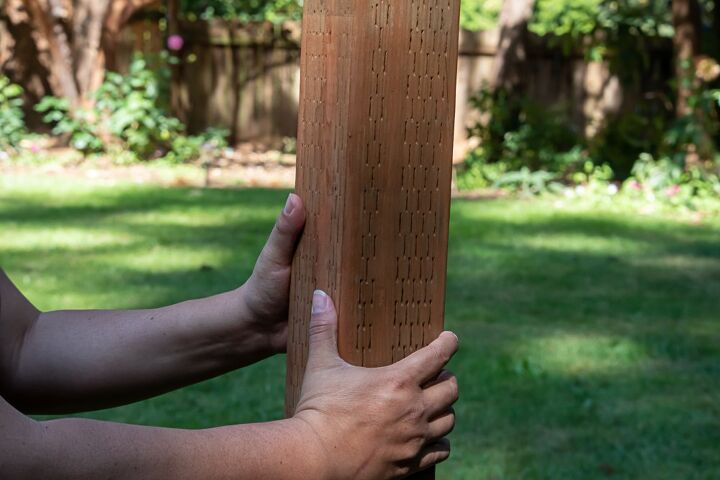How Long Will a Treated 4×4 Post Last in the Ground?

There are a lot of reasons why you may want to sink a post into the ground. Most importantly, that post can be made of different materials. Wood is a very common, cheaply acquiring material for putting posts in the ground.
Treated 4×4 posts last an average of 20 years in the ground. Some 4×4 posts can last for up to 40 years if you use a surface treatment and the climate is mild. Conditions such as excessive moisture and frequent storms can shorten the lifespan of 4×4 posts.
Do You Need a Deck or Porch Contractor?
Get free, zero-commitment quotes from pro contractors near you.

Wood Posts in the Ground
If you plan to put posts in the ground – and there are many reasons that you would do so – it is important that you use a treated wood if you aren’t going with a metal post. Using untreated wood will mean that you will need to replace the post far sooner than later. Some hardware stores will treat and cut wood for you.
Treated wood extends the life of the tree substantially. Untreated wood can begin to rot in just a year or two; treated wood will last 20-25 years on average depending on what kind that you purchase. The wood remains structurally sound even in the face of constant exposure to the sun and elements. It is also worth checking out which type will fit best into your yard aesthetic.
Here are a few things you should know before putting wooden posts in the ground. These tips could help you get more life out of your posts than you would have on your own.
Why to Use Treated Wood
Treated wood versus untreated wood can be a night and day comparison. Untreated wood will generally only last up to five years when facing constant exposure. Treated wood, meanwhile can last 20 years and, in some cases, as long as 40 years.
Even worse for unprotected wood is that it can begin rotting as soon as a year after placing it. Untreated wood can face exposure to termites or other organisms that can begin to weaken the structural integrity of the post.
Treated wood can also be highly beneficial when it comes to tree preservation. If the wood being used to create these posts lasts far longer, it means that fewer trees need to be harvested. Treating the wood can have a highly beneficial impact on tree harvest locally.
Lastly, using chemical treatments can provide resistance to fire. With no chemical treatments at all, the wood can be rapidly consumed by any fire. That will require immediate replacement of that post. With treatments, it can at least have a better chance of standing up to the fire.
Different Categories of Pressure Treatments
There are three separate categories when it comes to pressure treating wood. Each has its own unique applications and uses. The first is known as Waterborne. This is what would be used for residential projects as well as general industrial and commercial use.
Less common treatments are oil-borne, which is used for cross arms and utility poles, and creosote-treated, which is used in railroad construction. You will likely need Waterborne to get the job done when putting a post in the ground.
Extend the Life with Concrete
For the most part, when someone installs a post in the ground, they do so directly into the soil. This is the easiest way to install the post, so it only makes sense that this is the most common application. That said, there is another way to extend the life of your wood post.
Installing the wood post into concrete can extend the life of the post even further. This is because the wood will not be subjected to the moisture of the soil, allowing it to wear down at a decelerated rate over time. That could give you many more years on your post than it would get by being installed into the ground.
Preventative Protection Categories
There is a system put out by the American Wood Protection Association that will designate which systems are to be used for which specific purpose. There are few universal treatments that will protect against everything.
That said, there are specific treatments for a number of things. The most prevalent is against decay, rot, and potential termite infestation. When those things take hold, a post can be eaten away fairly quickly. This goes hand in hand with exposed, outdoor applications in most cases.
There are also treatments for wood that will be exposed to nautical situations. For instance, if the wood is being used for pier or dock pilings, it can be treated to stand up to exposure to marine organisms. Lastly, there are some treatments that can make the wood more fire retardant as well.
Surface and Topical Treatments
There are two ways to properly treat wood: with a surface or topical treatment or using pressure-impregnated treatments. Surface treatments are just that: they are applied directly to the surface of the wood in question.
This can be somewhat limited, especially if you aren’t providing additional treatment to the wood until after you have installed it. Those topical treatments are only able to reach the areas that they touch. This can make a huge difference in the life of the wood.
Also keep in mind that even if you regularly coat the surface of your wood with some kind of sealer that is meant to protect it, it won’t automatically keep that wood from rotting or potentially being attacked by pests and insects.
Pressure-Impregnated Treatments
This is the kind of treatment that gets injected into the interior of the wood. It is a term for getting those preservative chemicals directly into the wood fibers and removing any of the excess. This leaves just enough chemicals in the wood so that it can protect the entirety of the post for longer.
There are specific requirements and intended uses depending on what type of wood is in question. This is done because each type of wood has different needs in order to prevent rotting or other damage from occurring.
Pressure-impregnated treatments tend to be more effective than topical ones. This is because they can get deep into the wood in order to protect every fiber. A surface treatment will only cover that affected area; it won’t stop any potential rot from occurring.
Not All Woods are Created Equally
It is also important to keep in mind that different kinds of wood will have different traits. This will help you have a better idea of the type of wood that you should use for a post to get the most life out of it. Choosing the wrong kind of wood can mean that you need to replace the post sooner rather than later.
Understanding the different traits that some of the most common types of wood have can allow you to make a more informed, educated decision. The area you live in – and the type of weather that the area experiences – plays a heavy role as well.
Do You Need a Deck or Porch Contractor?
Get free, zero-commitment quotes from pro contractors near you.

Redwood and Cedar are Naturally Resistant to Rot
When putting a post into the ground, picking a wood that is naturally resistant to rot is important. When a wood isn’t resistant to rot, it will need to be replaced relatively soon. That is why using a post made of cedar or redwood can be the smart way to go.
You can increase the durability of any kind of wood with some water repellant; that can make naturally resistant woods even more formidable against the elements. This is a good idea if you are putting the post in the ground, where it will be exposed to the soil and all that comes with it.
Related Guides

Ryan Womeldorf has more than a decade of experience writing. He loves to blog about construction, plumbing, and other home topics. Ryan also loves hockey and a lifelong Buffalo sports fan.
More by Ryan Womeldorf



























